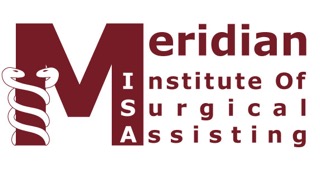Recommended Surgical Standards of PracticeThe purpose of the ASA is to study, discuss and exchange professional knowledge, expertise, and ideas in the field of Surgical Assisting; promote a high standard of surgical assisting performance for quality patient care; to stimulate interest in continuing education for surgical assistants; to encourage employment of surgical assistants through cooperative efforts with other professional health care organizations and individuals; to promote and maintain communication and cooperative relationships with professional health care organizations; and to explore and encourage the diversified roles of the surgical assistant. AS DEFINED BY THE AMERICAN COLLEGE OF SURGEONS (ASC), SURGICAL ASSISTANTS PROVIDE AID IN EXPOSURE, HEMOSTASIS, CLOSURE, AND OTHER INTRAOPERATIVE TECHNICAL FUNCTIONS THAT HELP THE SURGEON CARRY OUT A SAFE OPERATION WITH OPTIMAL RESULTS FOR THE PATIENT. IN ADDITION TO INTRAOPERATIVE DUTIES, THE SURGICAL ASSISTANT ALSO PERFORMS PREOPERATIVE AND POSTOPERATIVE DUTIES TO BETTER FACILITATE PROPER PATIENT CARE. THE SURGICAL ASSISTANT PERFORMS THESE FUNCTIONS DURING THE OPERATION UNDER THE DIRECTION AND SUPERVISION OF THE SURGEON AND IN ACCORDANCE WITH HOSPITAL POLICY AND APPROPRIATE LAWS AND REGULATIONS.
The Association of Surgical Assistants (ASA) Recommended Standard of Surgical Practices agrees with the statement of the American College of Surgeons that says, “It may be necessary to utilize non-physicians as first assistants. Surgeon’s Assistants (SA) or Physician Assistants (PA) with additional surgical training should meet national standards and be credentialed by the appropriate local authority. These individuals are not authorized to operate independently.”
THE ASA HOLDS THOSE INDIVIDUALS THAT HAVE RECEIVED THEIR CERTIFIED SURGICAL FIRST ASSISTANT (CSFA) AND THE CERTIFIED SURGICAL ASSISTANT (CSA) TO THE HIGHEST STANDARDS. UPON COMPLETION OF A CAAHEP ACCREDITED SURGICAL ASSISTING PROGRAM AND SUCCESSFUL PASSING OF THE APPROPRIATE CERTIFICATION EXAM FOR EITHER THE CSFA OR CSA CREDENTIAL; THE FOLLOWING STANDARDS SHOULD BE MET:
The CSFA/CSA should be knowledgeable in and follow the policies and procedures of the hospital/surgery center where they are performing surgical duties, and comply with local, state and federal laws and regulations.
The CSFA/CSA should maintain certification by completing the necessary number of continuing education (CE) required by their organization.
The CSFA/CSA should introduce themselves to the patient prior to surgery, review the History and Physical, radiology results, lab tests, consent, and all other pertinent information that could affect the case.
The CSFA/CSA should be prepared for surgery by making sure that all necessary equipment is in the operating room (OR) and in working order prior to surgery. This includes the knowledge, understanding and ability to operate the necessary equipment needed for the case.
The CSFA/CSA should be knowledgeable in and able to place IV’s and Arterial Lines. This includes being knowledgeable in the patient’s anatomy and choosing the best option for optimal patient outcome.
The CSFA/CSA should be knowledgeable in and be physically able to move and properly position the patient. This includes but is not limited to the placement of specific positioning aids for different specialties, table positioning and properly securing the patient to the OR table to prevent injury to the patient during the procedure.
The CSFA/CSA will be knowledgeable in and be able to prepare the patients’ surgical site, including but not limited to: shaving, foley placement, surgical preps, (i.e. scrubs & paints) of the surgical area. This includes waiting for the recommended dry times before proceeding with the procedure. This also includes the proper placement of pneumatic tourniquets.
The CSFA/CSA should be knowledgeable in and be able to properly drape the patient to provide optimal visualization for the surgeon.
The CSFA/CSA should stop all activity and actively participate in the time-out.
The CSFA/CSA should perform perioperative tasks under the direction/supervision of the surgeon. Activities that the CSFA/CSA can perform will only consist of those that they have been properly trained to perform. This can include activities included in the accredited program which they have graduated from, CEs, or hands-on training by the surgeon.
The CSFA/CSA should be knowledgeable in and use proper aseptic techniques to assist in infection prevention.
The CSFA/CSA should be knowledgeable in and expected to proficiently assist in proper placement of incisions. This includes using the correct blade, being knowledgeable in the different types and proper placement of incisions to avoid causing injury to the patient.
The CSFA/CSA should be knowledgeable and proficient in placing access ports for all laparoscopic, including robotic, procedures.
The CSFA/CSA should be knowledgeable and proficient in retracting tissue to provide optimal exposure. This includes knowing the different types of tissue (i.e. blood vessels, nerves, etc.) and different retracting devices to minimize tissue trauma during the case.
The CSFA/CSA should be knowledgeable in and proficient in tissue manipulation. This includes dissection, retraction, and removal of tissue that the surgeon deems necessary, including the harvesting of grafts. This includes the insertion and removal of implants and implanted devices.
The CSFA/CSA should be knowledgeable in and able to actively provide hemostasis using various instruments, techniques, devices, and hemostatic agents, including cauterization.
The CSFA/CSA should be knowledgeable and able to draw up and inject local anesthesia into the surgical site to assist in minimizing the patient’s postoperative pain. This includes the correct medication, correct dose, and correct site.
The CSFA/CSA should be knowledgeable in human anatomy and specifically trained in different suturing techniques. This includes the ability to perform different types of suturing on different types of tissue, including using the correct size and type of suture, the correct needle for the tissue being sutured, and being able to execute effective tying techniques.
The CSFA/CSA should be knowledgeable in and able to properly place postoperative dressings, including different types of wound vacuum systems. This includes being knowledgeable about possible skin allergies and other conditions as well as using the most appropriate dressing for optimal healing of the patients’ surgical wound.
The CSFA/CSA should be knowledgeable in and able to properly select, apply and remove splints and casts.
If the CSFA/CSA is not trained, knowledgeable or not confident performing any action the surgeon is requesting, it is the responsibility of the CSFA/CSA to inform the surgeon. It will then be the responsibility of the CSFA/CSA and the facility to obtain proper education and training in that area for future cases.
If the CSFA/CSA witnesses any surgeon, assistant, or any member of the OR team not performing in a manner that provides the best care and outcome for the patient, they will immediately speak up and follow the policies and procedures of the facility to report the behavior they witnessed.
|






